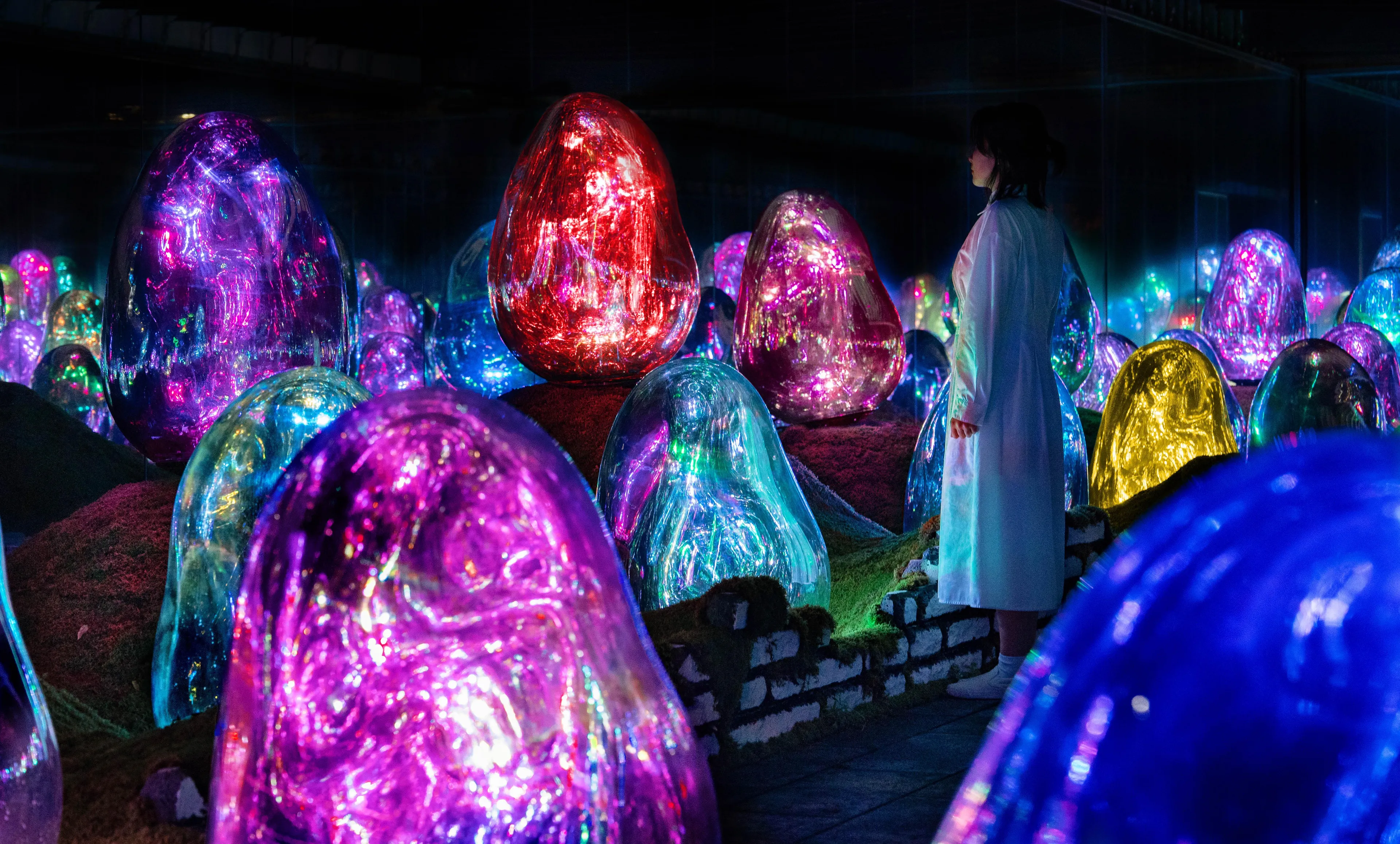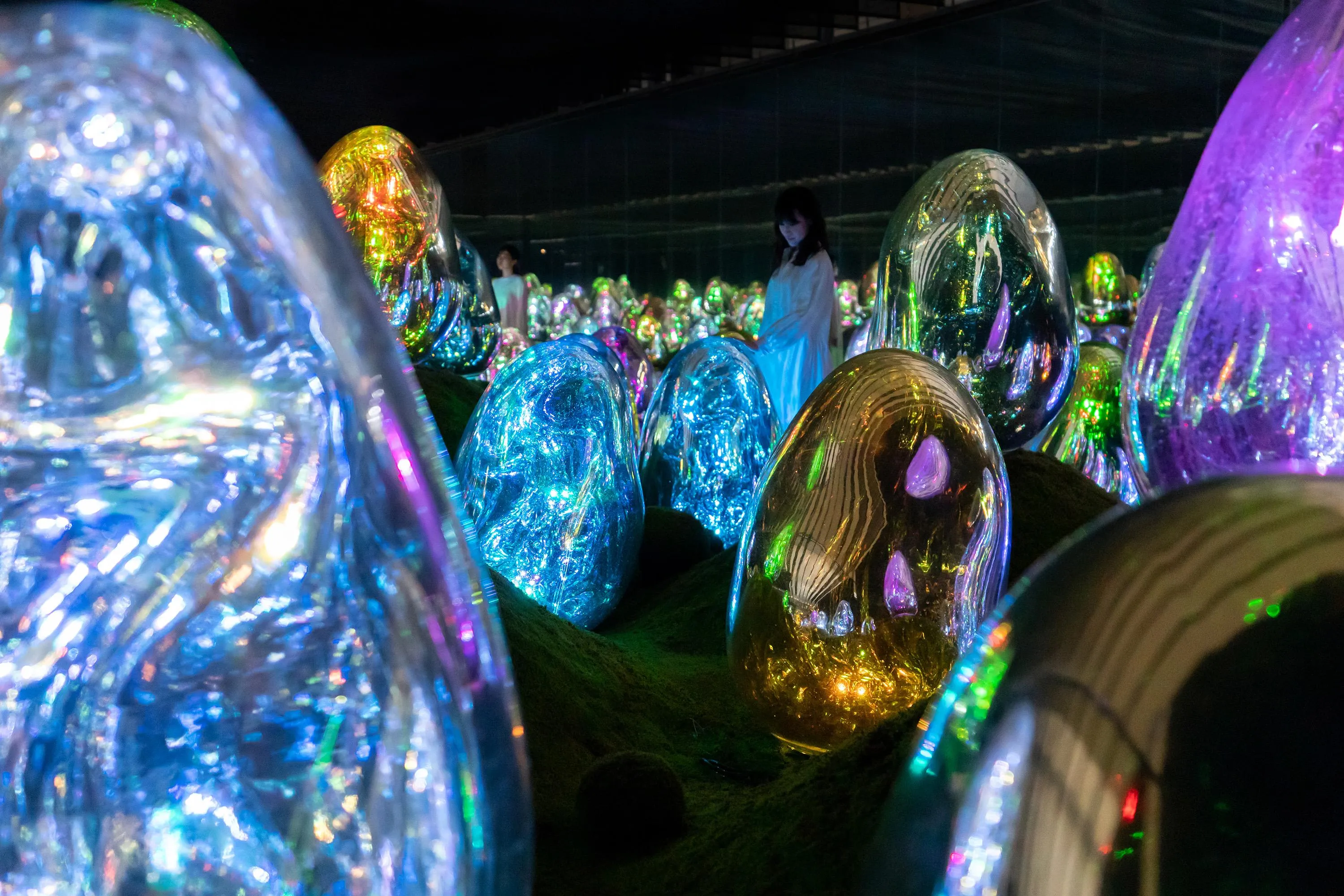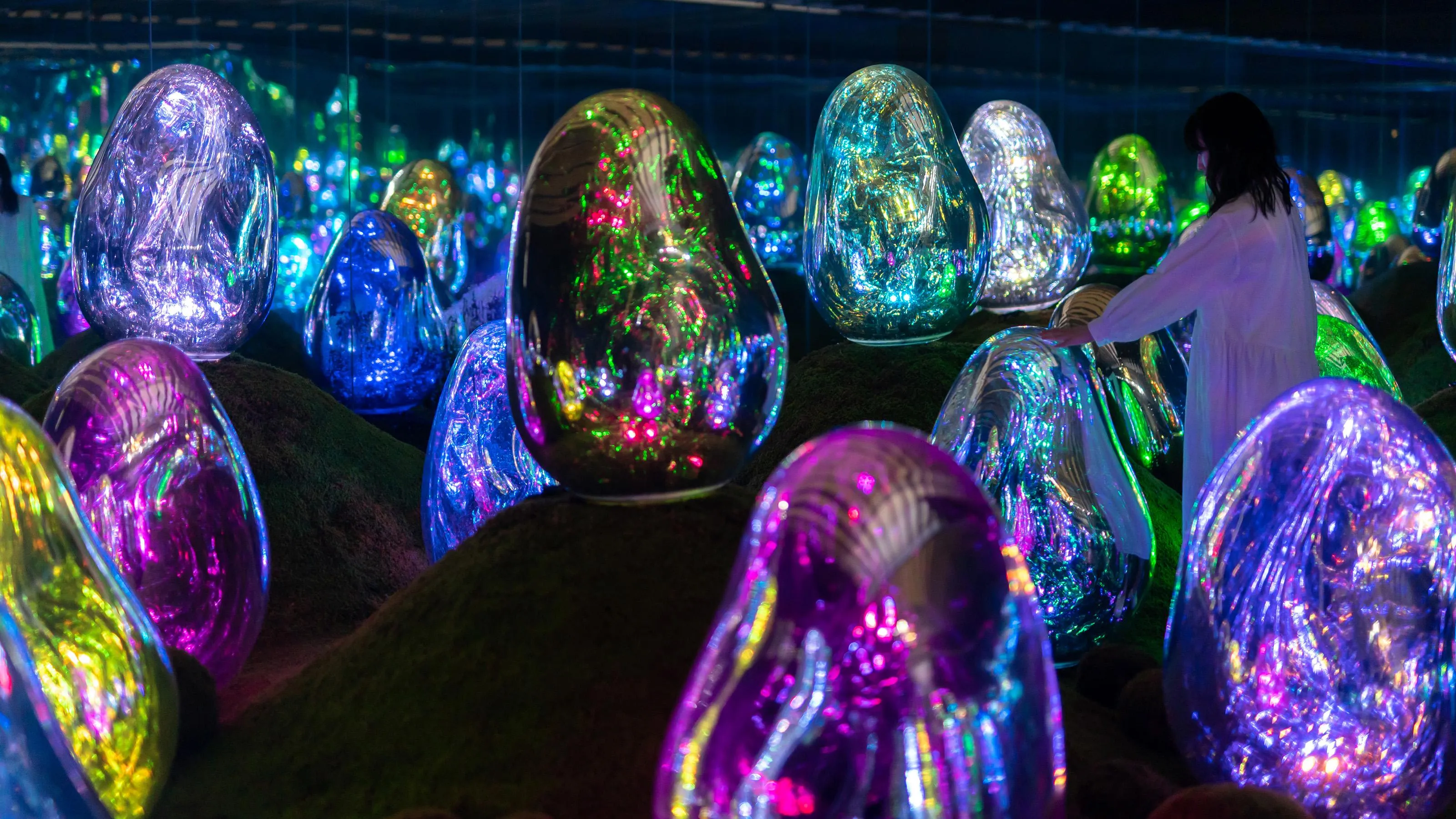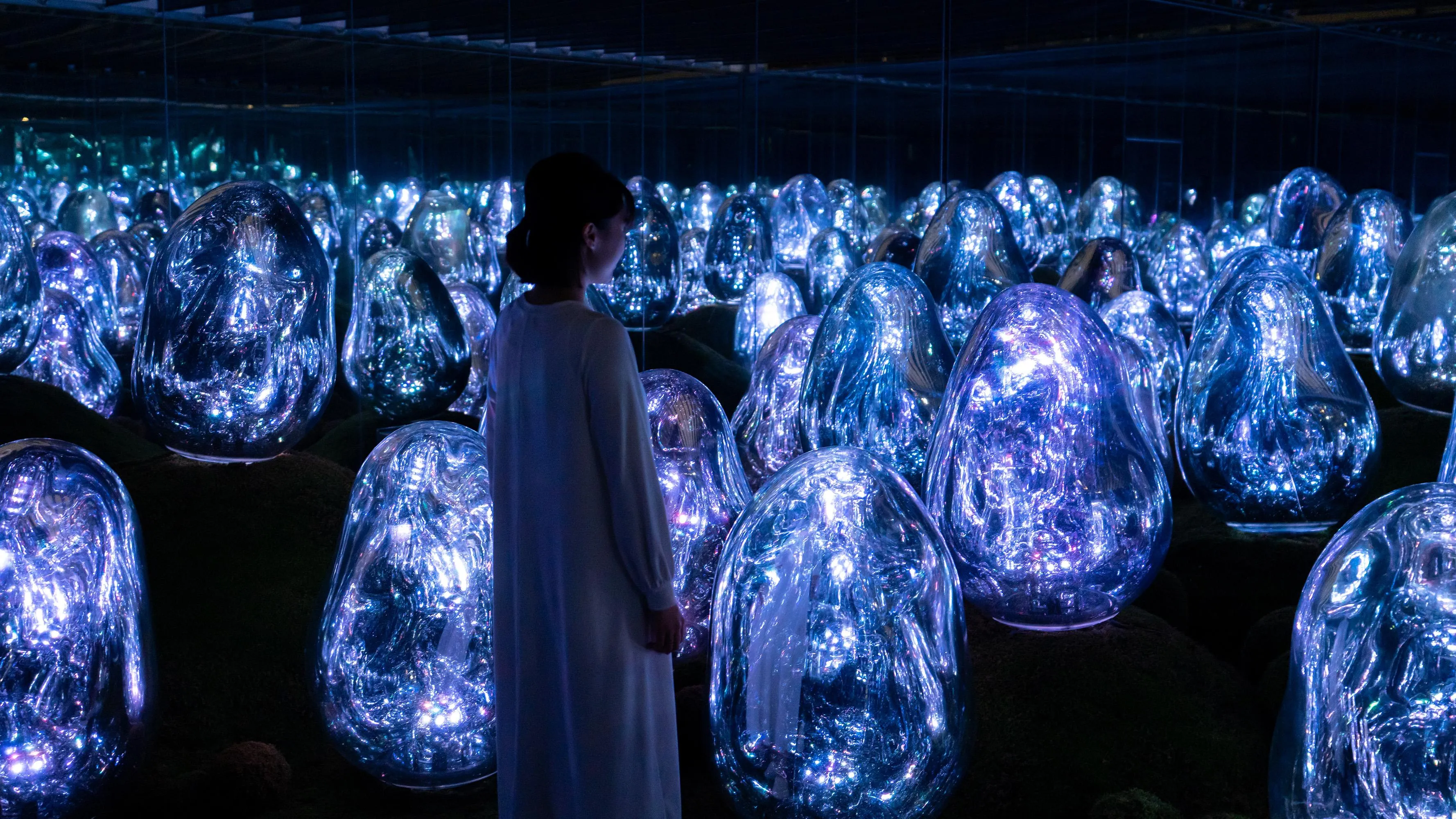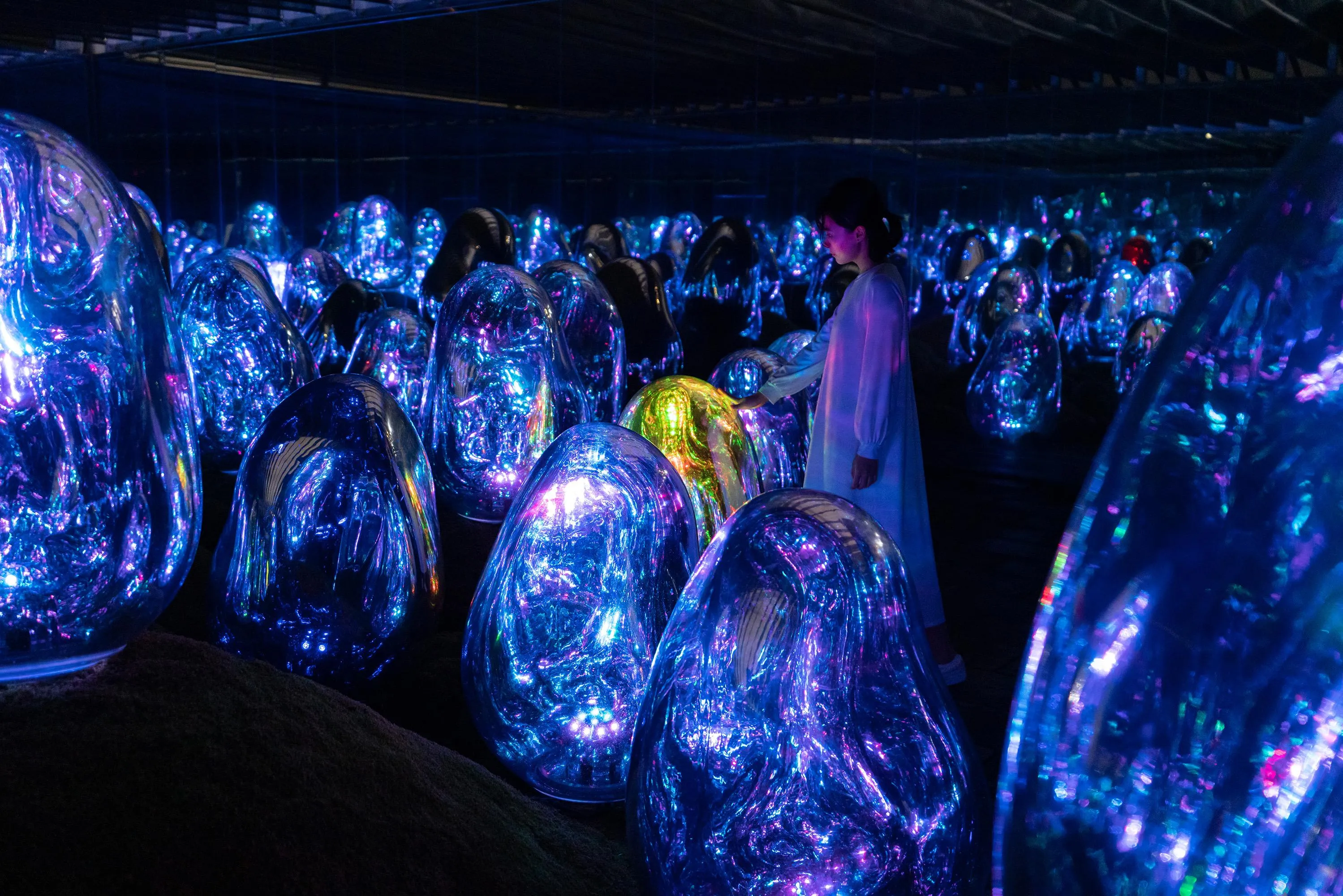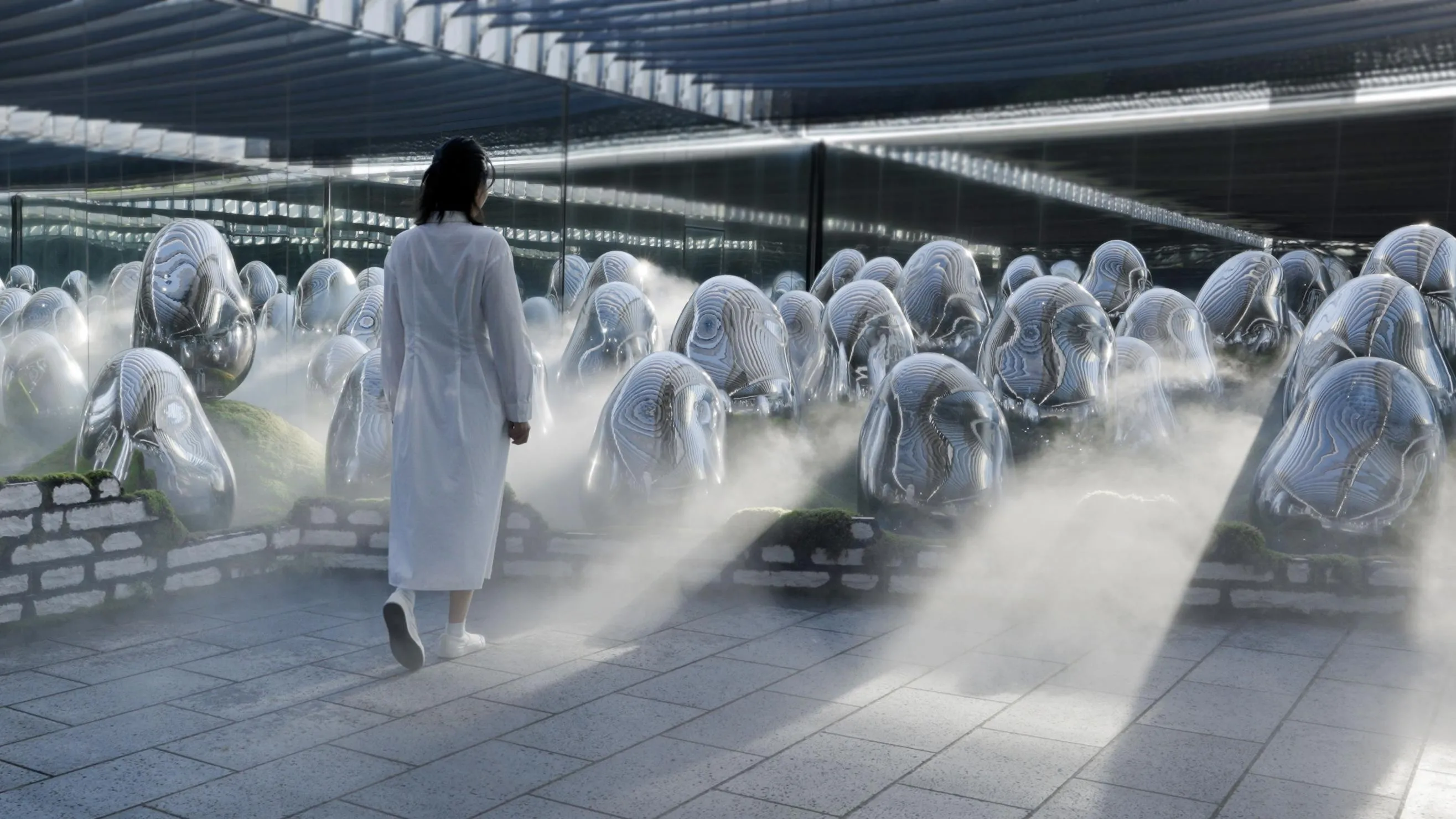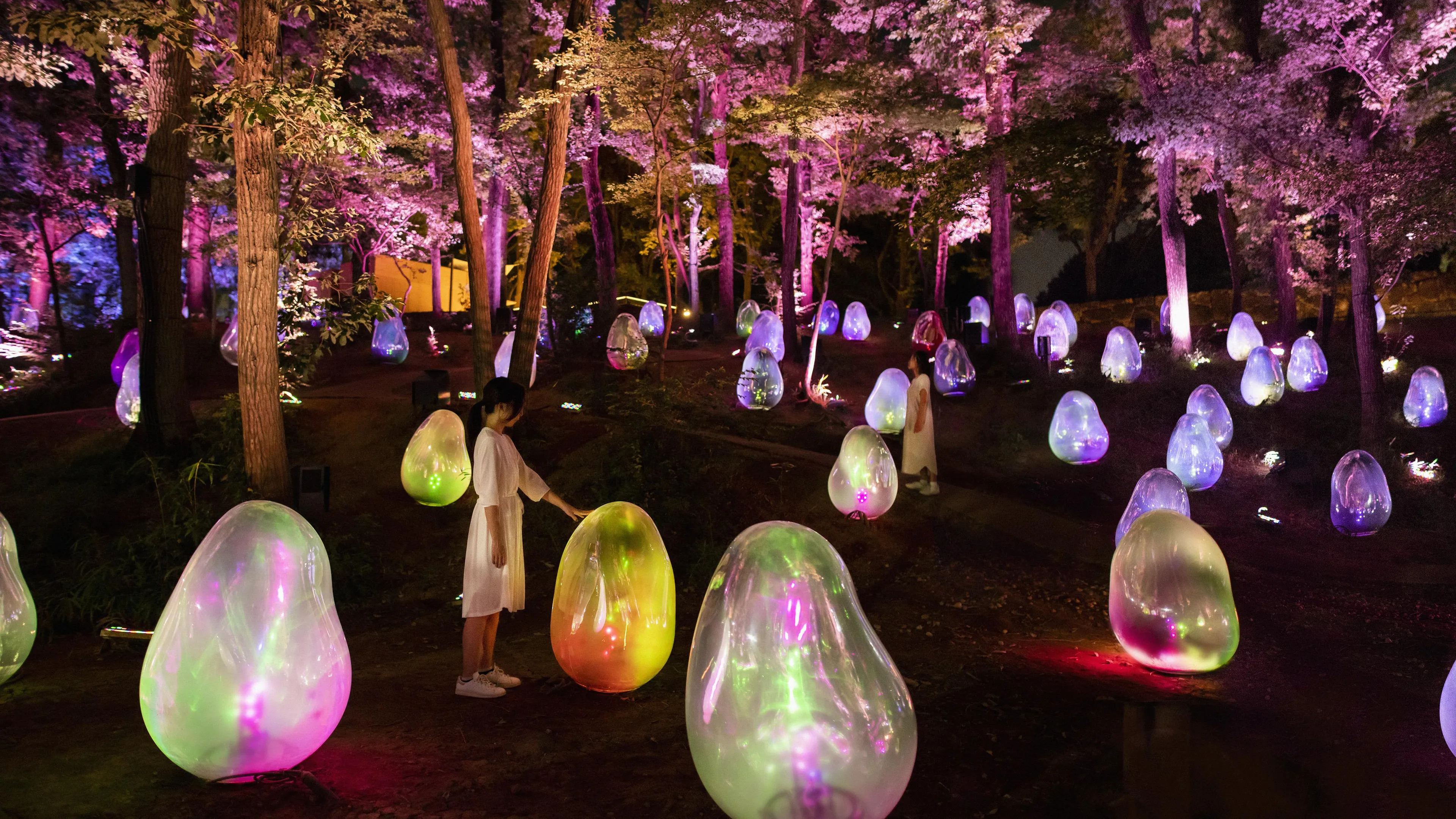Moss Garden of Resonating Microcosms - Solidified Light Color, Dusk to Dawn
teamLab, 2021, Interactive Installation, Endless, Sound: Hideaki Takahashi, Production Support: Hirohito Saito (OryZa Design), Shinya Yoshida (SYD INC.)
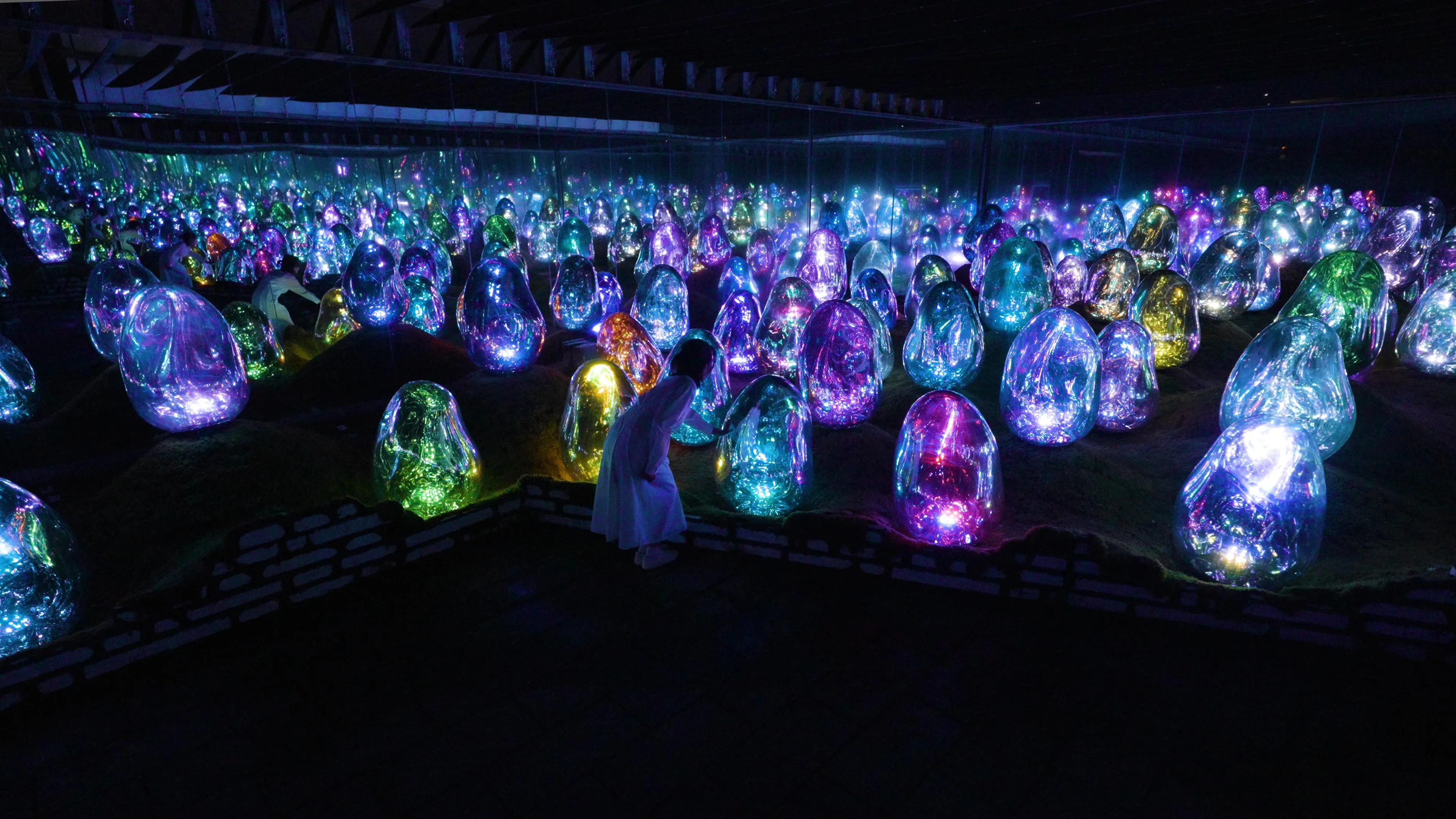
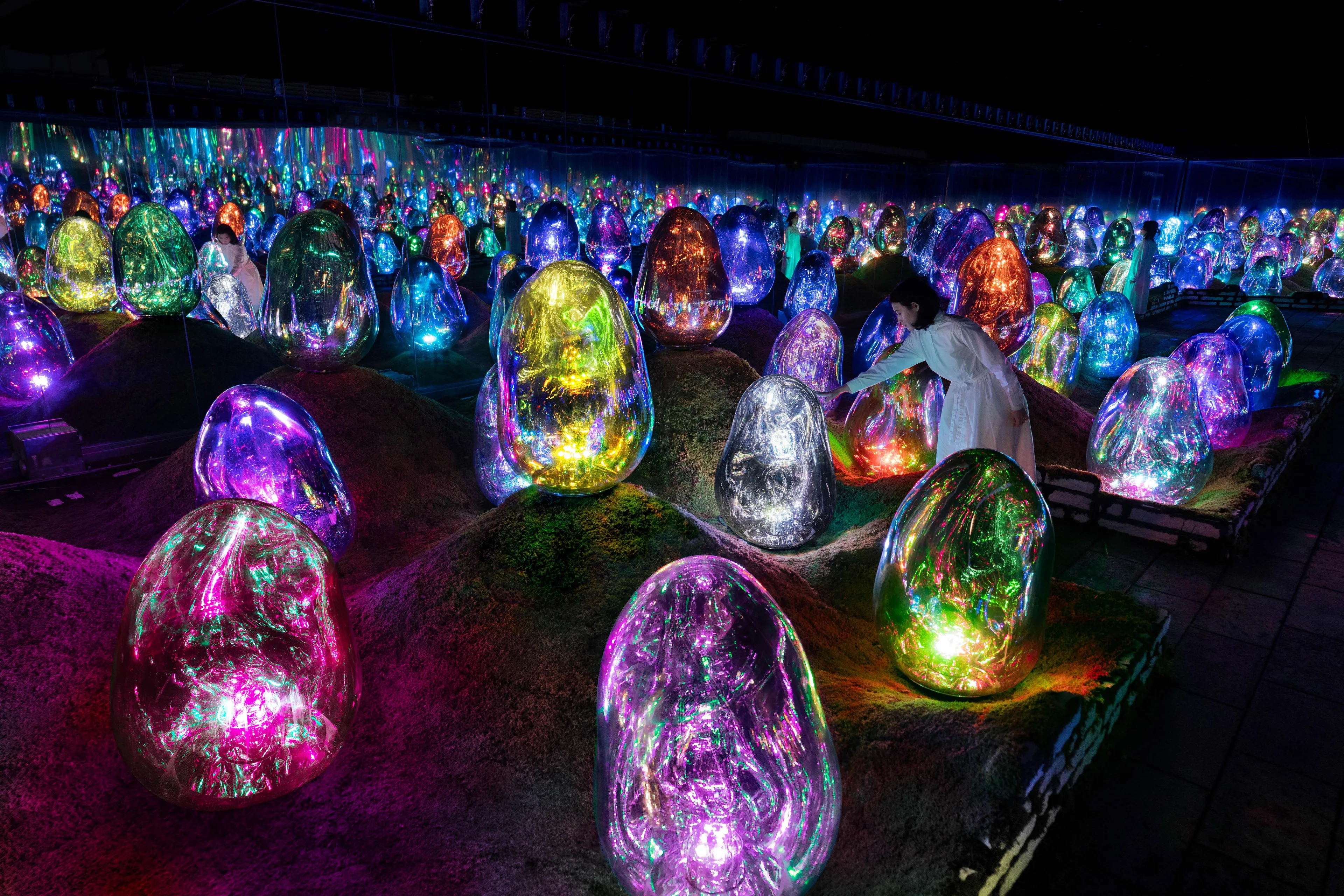
Daytime
Moss Garden of Resonating Microcosms - Solidified Light Color, Dusk to Dawn
teamLab, 2021, Interactive Installation, Endless, Sound: Hideaki Takahashi, Production Support: Hirohito Saito (OryZa Design), Shinya Yoshida (SYD INC.)
Ovoids that change appearance with the sunrise and sunset are laid out in the moss garden.
With sunrise, the ovoids begin to reflect the world around them. When pushed down by a person or blown by the wind, the ovoid falls back and then rises, releasing a resonating tone. The ovoids around it also respond one after another, continuing to resonate with the same tone.
As the sun sets, the ovoids shine by themselves. When an ovoid is pushed by a person or blown by the wind, it shines brightly and emits a sound tone, as it rights itself. The ovoids around it also respond one after another, emitting the same light color and sound tone that continues to resonate out.
The space of the work is interactively transformed under the influence of the wind, rain, and the behavior of the people in the space, making the environment and the people a part of the work. When the wind is quiet and people are still, the ovoids begin to flicker slowly.
teamLab is experimenting with the concept of color. The ovoids can change into a total of 61 newly-defined Solidified Light Colors.
It is said that mosses were the first terrestrial organisms to appear in a world of rocks and sand, where there was no life on land yet. As mosses and ferns appeared and forests were created, a variety of animals became able to live on land.
Since water inside cells is essential for living things, if the body lacks water, it will die. Mosses, on the other hand, are poikilohydric, meaning the water content in the cells change according to surrounding humidity levels. So moss will not die during long dry periods, and they come back to life when given water. Because mosses are poikilohydric, their color and shape change dramatically when the air is dry versus when it is wet, such as when there is rain or fog.
Tardigrades, which live in moss, also go into a non-metabolic state of dormancy when the surrounding environment becomes dry, but they revive and become active when there is water. The state that tardigrades enter, when they are neither living nor dead, is called cryptobiosis. This may cause us to consider what it means to be alive.
With sunrise, the ovoids begin to reflect the world around them. When pushed down by a person or blown by the wind, the ovoid falls back and then rises, releasing a resonating tone. The ovoids around it also respond one after another, continuing to resonate with the same tone.
As the sun sets, the ovoids shine by themselves. When an ovoid is pushed by a person or blown by the wind, it shines brightly and emits a sound tone, as it rights itself. The ovoids around it also respond one after another, emitting the same light color and sound tone that continues to resonate out.
The space of the work is interactively transformed under the influence of the wind, rain, and the behavior of the people in the space, making the environment and the people a part of the work. When the wind is quiet and people are still, the ovoids begin to flicker slowly.
teamLab is experimenting with the concept of color. The ovoids can change into a total of 61 newly-defined Solidified Light Colors.
It is said that mosses were the first terrestrial organisms to appear in a world of rocks and sand, where there was no life on land yet. As mosses and ferns appeared and forests were created, a variety of animals became able to live on land.
Since water inside cells is essential for living things, if the body lacks water, it will die. Mosses, on the other hand, are poikilohydric, meaning the water content in the cells change according to surrounding humidity levels. So moss will not die during long dry periods, and they come back to life when given water. Because mosses are poikilohydric, their color and shape change dramatically when the air is dry versus when it is wet, such as when there is rain or fog.
Tardigrades, which live in moss, also go into a non-metabolic state of dormancy when the surrounding environment becomes dry, but they revive and become active when there is water. The state that tardigrades enter, when they are neither living nor dead, is called cryptobiosis. This may cause us to consider what it means to be alive.
